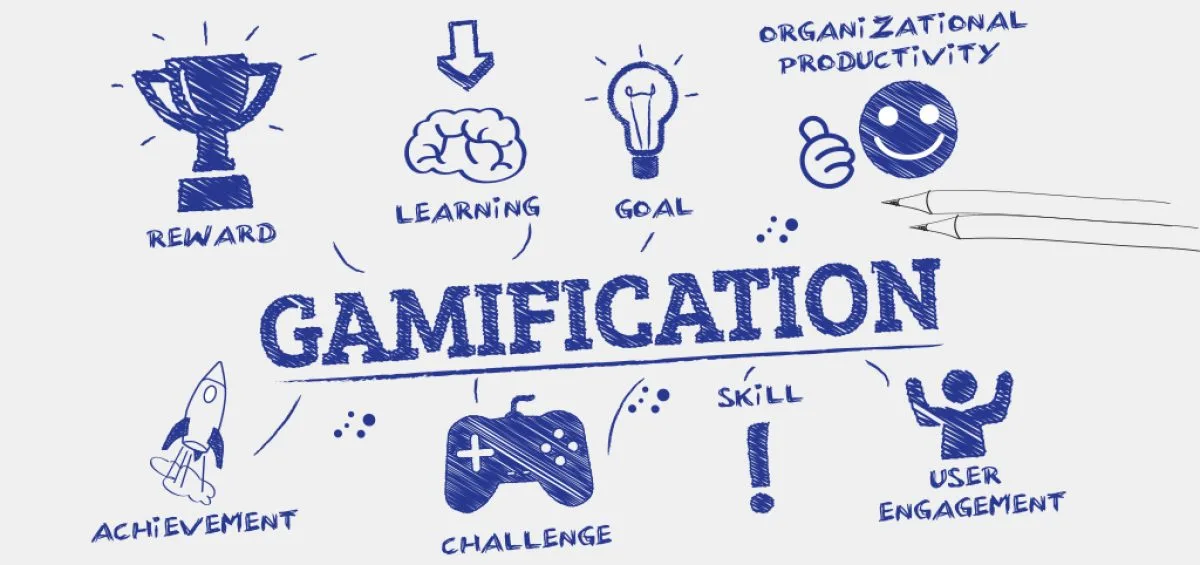Games are incredibly engaging and have an excellent way of getting people to complete goals. They keep a player focused, excited, and constantly motivated to succeed. Doing so even makes them happy.
Table of Contents:
- What is Gamification?
- What are the 7 Benefits of Gamification for Business?
- Where Can You Use Gamification?
- Benefits of Gamification in Business
- Gamification in Learning
- Gamification Examples
- Conclusion
What is Gamification?
Gamification of business involves the incorporation of game elements and mechanics, such as points, badges, and leaderboards, into non-game contexts to engage and motivate people to achieve their goals. Gamification can be applied to a wide range of activities, including education, marketing, and fitness.
What are the 7 Benefits of Gamification for Business?
Gamification of business can be an effective way to encourage people to perform a task or complete a goal, as it taps into our natural desire to compete and succeed.
By adding elements of competition, reward, and feedback, gamification can make a task more engaging and enjoyable, and can also help to motivate people to work harder and achieve their goals.
Here are the 7 Benefits of Gamification for Business:
- Increased motivation and engagement: Gamification of business can make a task more enjoyable and engaging, which can help to increase motivation and encourage people to work harder to achieve their goals.
- Enhanced learning and retention: Gamification can make learning more interactive and enjoyable, which can help students retain information more effectively.
- Improved productivity: Gamification can be used to encourage employees to complete tasks more efficiently and effectively, resulting in improved productivity.
- Increased customer satisfaction: Gamification can be used to encourage customer loyalty and increase satisfaction with a product or service.
- Better health outcomes: Gamification can be used in the field of health and wellness to encourage people to adopt healthier habits, such as exercising more regularly or eating more nutritious foods.
- Increased social interaction: Gamification can create a sense of community and encourage social interaction among users, which can be especially beneficial for those who may be isolated or disconnected from others.
- Greater sense of accomplishment: Gamification can provide a sense of accomplishment and progress, which can be especially rewarding for those who may be struggling to achieve their goals.
Where Can You Use Gamification?
Gamification can be used in a variety of settings, including in the workplace, to increase productivity and employee engagement, and in education, to help students learn and retain information more effectively.
It is also frequently used in marketing and customer engagement, to encourage brand loyalty and increase customer satisfaction.
The idea of Gamification is to take these golden traits from games and apply them to your real-life activities in the workplace.
Game mechanics like Points, Badges, and Progress Bars can be used in non-game contexts at work like Learning, Performing, and Completing Tasks. Gamification in business is the conscious integration of these game mechanics into existing processes to better engage users. In other words, it’s all about:
Making it fun to do things that you have to do anyway.
Gamification, therefore, is not the creation of games for businesses, or a stand-alone employee engagement program.
It is the infusion of game-like elements into essential tasks for continuous user engagement.
The significant returns on investment here are user traits like:
- Improved Adherence,
- Better Learning,
- Faster Onboarding,
- Better Motivation, etc.
It hinges on the simple but effective thought that “If it’s fun, you’ll do it better.” These promising traits; which can create an ideal workforce that integrates with the organizational goals; is the reason for the popularity of Gamification in business.
Benefits of Gamification in Business
Business gamification is simple enough to be adopted into the processes of any business. It is not a trend that is exclusive to large organizations. You can easily apply various game mechanics to your workflow, irrespective of your industry or size, and experience the following benefits:
1. Better Engagement through Gamification
This is the measure of how well your employees dedicate themselves to the work they do. Employee engagement plays a huge role in how fast an organization progresses, which is why a culture that helps with their involvement matters so much.
Through gamification, your employees can build on any existing work culture using mutually inclusive tasks, thereby driving their involvement with their job. A Gamified Business Platform that allows the following mechanics can greatly benefit your organization from their improved engagement:
- Tracking Work Progress
This allows your employees to see their path in a project and start brainstorming on how to proceed. Employees are therefore engaged with the process of completing the work.
- Tagging Strengths & Weaknesses
Gamified feedback helps your employees analyze their performance and instantly benefit from constructive feedback.
- Direction and Planning
A flowchart of an outlined sequence of tasks due will help your employees gain a new perspective on their productivity. This motivates employees to plan their moves while being directed as per the organization’s needs.
- Tools for Progress
Giving your employees a set of visible Goals, Achievements, and Benchmarks will help convert their mundane work into engaging activities. They can now view their progress and know that it is based on their own commitment and dedication to the work, thereby acknowledging and their increasing engagement with the organization.
- Motivation
Your employees will gain better insights on how to receive recognition through a gamified system of Points, Badges, and Leaderboards. This will greatly motivate them to outperform each other and raise the competition level on the floor.
2. Better Alignment Through Gamification
Gamification encourages the desired employee behaviors that help align their goals with your organization’s goals. This software element is all it takes to bridge the gap between the employees and the company’s objectives. Gamification also helps to instil organizational values while helping employees align with the right goals to uniformly progress with the work culture that is the best fit.
By leveraging their improved engagement, you can produce interactions that inspire them to become better at identifying and forwarding the company values.
3. Improved Adaptation through Gamification
Business is done in dynamic environments and companies that cannot adapt to change, fail. Gamification in business comes as a tool to help employees adapt better. Whether it is management changes or market shifts, gamification in business helps improve your adaptability to evolving technology, rapid demand/supply changes, and even small consumer attention spans.
The gamification of the change process helps keep employees on the right direction through instant feedback in the event of straying. Consistent learning checks too can help ensure they have fit well into the new style of doing things.
It is natural to resist change but through gamification, your employees can learn to take short quick steps and get there faster, every time it is required.
Related Article: 12 Ways to Enhance Employee Engagement with Gamification
Gamification in Learning
Gamified learning is super simple.
Instead of proceeding the boring way and sitting through heaps of information, your employees can experience it through game mechanics like completing levels, progress bar, points, etc. They can be rewarded for things like task completion and/or participation to help stay engaged with the new material. Furthermore, learning materials that are studied by solving quizzes, completing simulations, etc. can be assigned individual weightage so that their performance can scored against each.
Related: How to Setup Effective Game-Based Learning for Enterprises
Employees will begin to love Gamified Learning if they have a chance to excel at the new material.
Gamification removes the traditional approach of just ‘being updated’ and adds value to the material being shared. This encourages employees to complete more tasks and better relate it to their individual jobs, instead of simply viewing instructional videos and presentation that does nothing to stimulate them.
Successful implementation can improve engagement, shorten the process, and facilitate meaningful learning experiences for your employees. There is no reason that learning in business cannot be fun, and given the dynamic quality of business environments, gamified learning is a great way to go.
Gamification Examples
Of course, gamification need not only be internal to the company. Customers can also be engaged through business gamification to improve their association with their product/service. For example:
The popular language learning application, Duolingo, has divided its learning material into an incredible number of exciting sections. Completing each gets you points/stars and everything is visible in an overall progress bar. Learners can earn ‘gems’ by attending a session every day, place ‘bets’ and ‘purchase’ cool things using them. It does a great job of motivating one to progress every single day. A user is thoroughly engaged and doesn’t feel the usual dread that can come with learning a new language.
A unique gamified learning tool adopted by many organization is the use of the Kahoot! App for internal quizzing. Employees sign in with the common code and answer questions based on the learning topic. At the end of the quiz, the employees at the top of the leaderboard are awarded vouchers or hailed as ‘Subject Matter Experts’ of a new product/service.
Conclusion
Gamification in business is an incredible strategy for improving the perspective on organizational workflow. It can be invaluable tool for improving employee learning and engagement.
There are simply too many ways to go about with gamification and you can choose just about anything to integrate with your workflow. Be sure to implement it just right and your return on investment will be huge.
Related:
Gamification – The Secret Sauce for Employee Engagement?
Everything You Must Know Before Selecting Gamification Services











